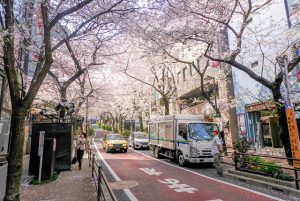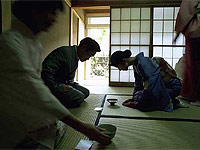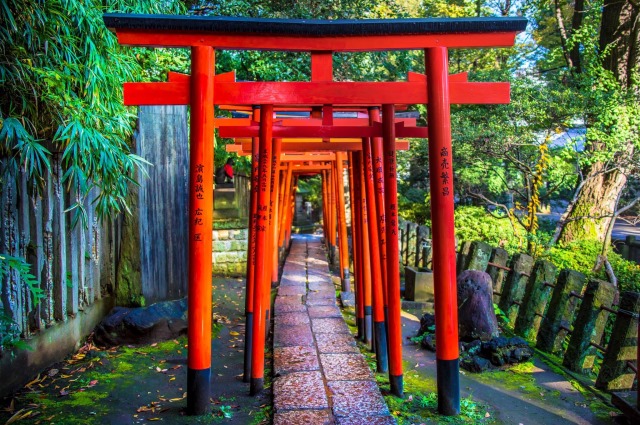national identity
SAKURA IN CONCRETE JUNGLE
 Many tourists come to Japan to enjoy sakura blossoms and take part in the khans, a long-standing Japanese tradition, when the Japanese go to parks and gardens to have a picnic with employees, friends, and their families. They walk, drink, socialize and have fun under the spreading sakura trees, thus paying tribute to the fleeting beauty of flowering and celebrating the arrival of spring.
Many tourists come to Japan to enjoy sakura blossoms and take part in the khans, a long-standing Japanese tradition, when the Japanese go to parks and gardens to have a picnic with employees, friends, and their families. They walk, drink, socialize and have fun under the spreading sakura trees, thus paying tribute to the fleeting beauty of flowering and celebrating the arrival of spring.
But it is not necessary to go to such large famous parks as, for example, Shinjuku Gyoen or Ueno Park to enjoy the marvelous beauty of sakura blossoms. In Tokyo, this huge metropolis, which many people imagine as the city of the future, erected from glass and concrete, there are many streets where you can see sakura blossoming in abundance. Continue reading
REGISTRATION OF VISA TO JAPAN. ADVICE TO TRAVELERS (part 2)
 WHO CAN HELP TO APPLY FOR A VISA
WHO CAN HELP TO APPLY FOR A VISA
Experienced tourists who have repeatedly visited foreign countries know that preparing documents for submission to the embassy is a painstaking task. It is not so simple to arrange everything independently as required by regulatory enactments. Most travelers decide to turn to specialists who will take all the mentioned chores on themselves.
Issues of visa support are now dealt with by many companies not only in Moscow or St. Petersburg, but also in other large cities of Russia. Continue reading
Tea ceremony (part 1)
 Among the unique arts, which in our understanding are inextricably linked with Japan, is the art of the tea ceremony, which means literally “tea with hot water” (cha – tea, yu – hot water). The Japanese tea ceremony is not just a tradition, it is a sacrament that cannot but attract attention and arouse respect.
Among the unique arts, which in our understanding are inextricably linked with Japan, is the art of the tea ceremony, which means literally “tea with hot water” (cha – tea, yu – hot water). The Japanese tea ceremony is not just a tradition, it is a sacrament that cannot but attract attention and arouse respect.
The art of the tea ceremony has been studied for years in special schools. Despite the fact that the process itself may seem simple and natural, there is no limit to perfection in this. The Japanese girl’s ability to meet guests, place them on mats according to the Japanese tradition, make fragrant tea, and then pour them into cups with a bow to serve it is the highest sign of aesthetic education. Continue reading




